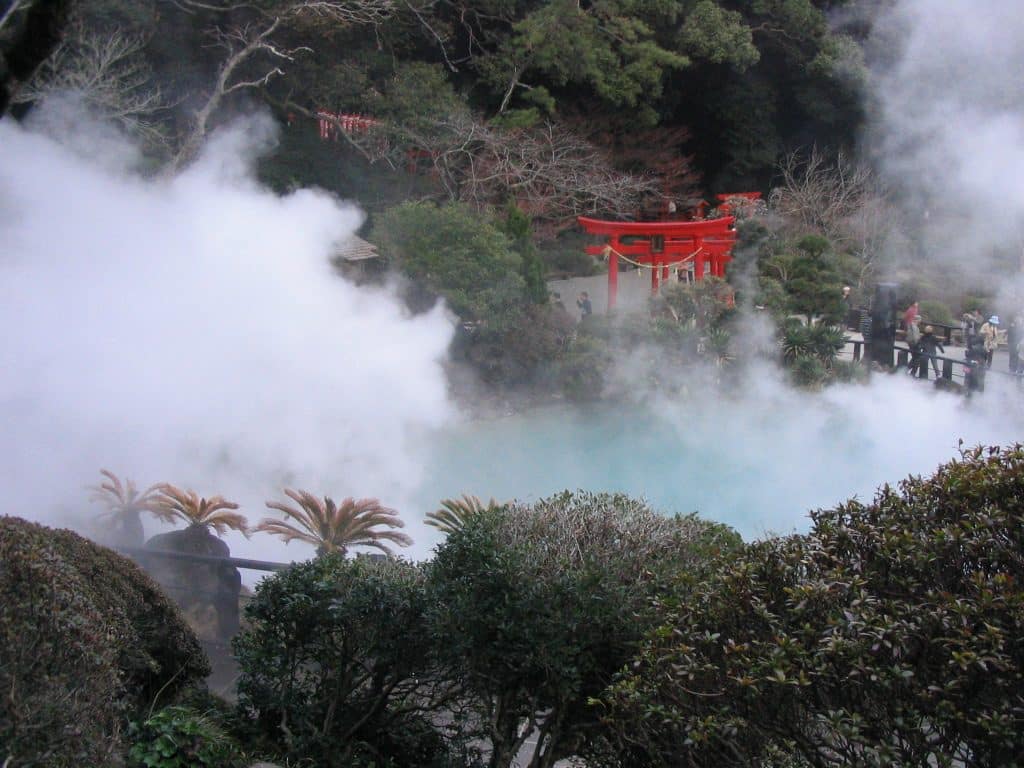ElectraTherm, an industry leader in low temperature heat to power generation, recently finished the commissioning of a Power+ Generator at a geothermal site in Beppu, Japan. This marks the second ElectraTherm low temperature geothermal heat recovery system in Japan. The system runs off the geothermal heat from an onsen where the local community has enjoyed bathing at this natural resource for centuries. The baseload renewable power that is generated is sold back to utility at an attractive feed-in-tariff rate. Additionally, the ORC system reduces the return water temperature, cooling the hot spring water that would otherwise be too hot for the onsen. This reduces the cooling costs thus further increasing revenue.
There is a great potential for low temperature geothermal heat recovery applications across Japan and we look forward to each unit commissioned there as we work on progressing the market further. Japan offer a feed-in-tariff for geothermal at 40 Yen/kW, which is about $0.33 USD. This makes geothermal applications in Japan very attractive. This site utilizes heat at 116°C with a flow rate of 45.4 m3/hr to generate 65 kWe. Unlike other renewable sources, geothermal heat is baseload, providing a continuous flow of hot water and therefore power generation capabilities 24/7.
“The US Department of Energy sponsored a program in 2012-2013 for ElectraTherm to develop a ‘micro-geothermal’ power plant that could tolerate remote, unmanned operation and also be able to handle the challenges presented by varying geothermal resources. This is the first commercial step in Japan to showcase that investment.”
– John Fox, CEO of ElectraTherm
ElectraTherm’s low temperature heat recovery solutions utilize Organic Rankine Cycle (ORC) technology to convert heat sources as low as 70°C into clean electricity (up to 125 kWe). The lowest heat requirements in the industry with best-in-class turndown ratios make ElectraTherm’s systems well suited for transient operation. Simple water and grid connections with a modular, scalable, and portable design make deployment fast and easy. A remote monitoring system also makes autonomous operation easier than ever thanks to the units’ ability to automatically load-follow and shutdown.
Per saperne di più e per sapere se i prodotti ElectraTherm fanno al caso vostro, visitate il nostro sito web pagina dei prodotti o contattateci.
Per rimanere aggiornati su ElectraTherm e sulle ultime novità in materia di calore di scarto, iscrivetevi alla nostra newsletter. qui.
Informazioni su ElectraTherm
ElectraTherm del Gruppo BITZER fornisce soluzioni di classe mondiale per il recupero del calore di scarto utilizzando il Ciclo Rankine Organico insieme a tecnologie proprietarie per convertire il calore a bassa temperatura in energia pulita. Le soluzioni semplici ed efficaci di ElectraTherm generano elettricità pulita, aumentano l'efficienza, riducono i costi energetici e diminuiscono le emissioni, senza alcun consumo aggiuntivo di carburante. Avendo spedito oltre 100 unità ORC in più di 13 Paesi, con oltre 2.000.000 di ore di funzionamento, ElectraTherm è leader mondiale nel recupero del calore di scarto su piccola scala.
Il vantaggio combinato dell'ingegneria di ElectraTherm e il valore del supporto di BITZER, il più grande produttore indipendente di compressori per la refrigerazione al mondo, che vanta quasi 3.500 dipendenti in tutto il mondo e un fatturato medio annuo di circa 1 miliardo di euro, consente al team di ElectraTherm di continuare a sviluppare una tecnologia ORC all'avanguardia nel settore, che fa bene sia al business che al pianeta.
ElectraTherm Generatore Power+ è una soluzione heat to power, che converte il calore di scarto in elettricità pulita e calore utilizzabile. Il Raffreddatore attivo è una soluzione di raffreddamento a energia zero, che utilizza lo stesso processo ORC per fornire un raffreddamento autoalimentato e al contempo generare elettricità. Entrambe le soluzioni di ElectraTherm riducono le emissioni e i costi energetici, fornendo al contempo un'alimentazione/raffreddamento di base. Sfruttare il calore residuo non è solo redditizio, ma anche pratico. Permette alle aziende di beneficiare di un'economia più circolare e di raggiungere gli obiettivi di sostenibilità.

